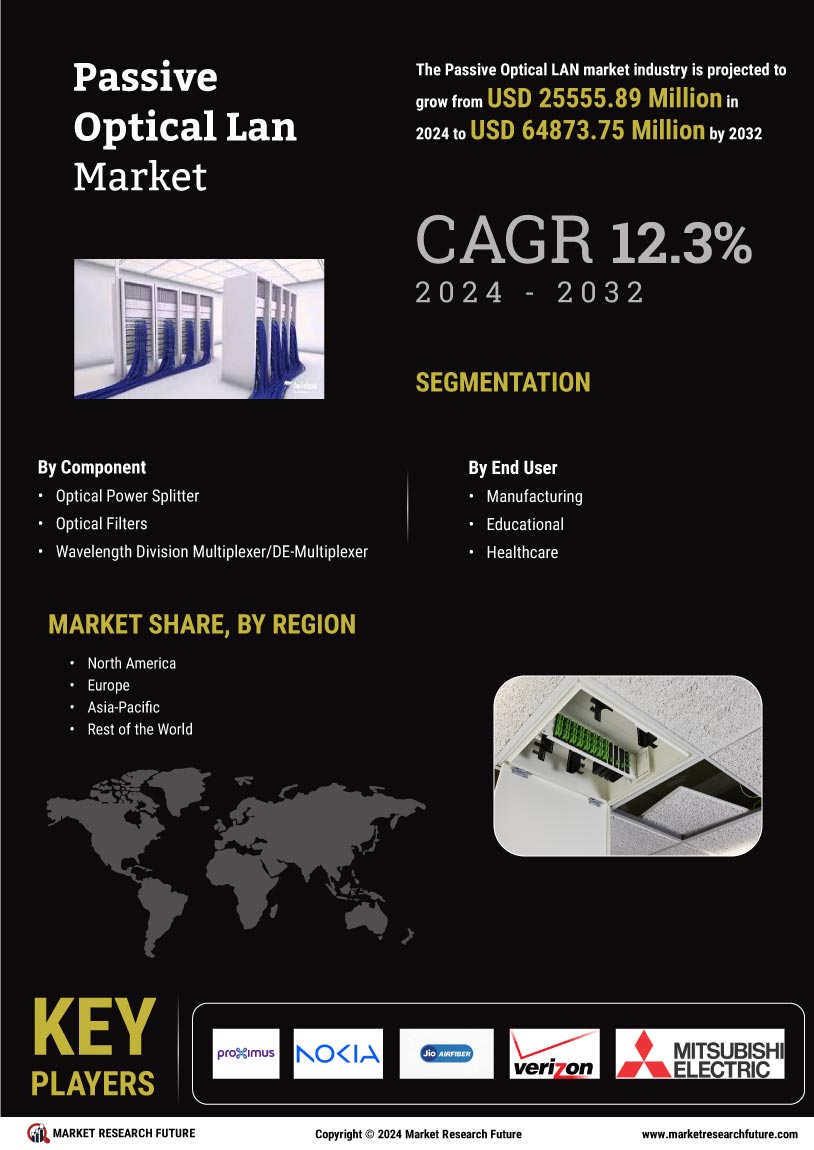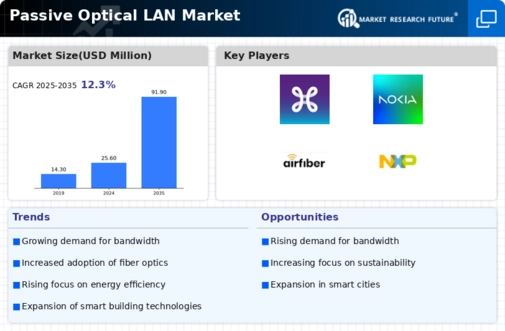Passive Optical LAN Market Summary
As per Market Research Future Analysis, the Global Passive Optical LAN Market was valued at USD 25555.89 Million in 2024 and is projected to reach USD 91733.79 Million by 2035, growing at a CAGR of 12.32% from 2025 to 2035. The market is driven by the increasing demand for high bandwidth and energy-efficient networks, as well as the need for high-speed internet. The healthcare sector leads in end-user demand, while the wavelength division multiplexer/DE-multiplexer component dominates market revenue. North America holds the largest market share, followed by Europe and Asia-Pacific, which is expected to grow rapidly due to technological advancements.
Key Market Trends & Highlights
The Passive Optical LAN market is witnessing significant growth driven by various factors.
- Market Size in 2024: USD 25555.89 Million.
- Projected Market Size by 2035: USD 91733.79 Million.
- CAGR from 2025 to 2035: 12.32%.
- Healthcare segment leads in end-user demand due to high-bandwidth requirements.
Market Size & Forecast
| 2024 Market Size | USD 25555.89 Million |
| 2035 Market Size | USD 91733.79 Million |
| CAGR (2024-2035) | 12.32% |
Major Players
Key players include Proximus Group, CommScope Holding Company Inc., Nokia, Airfiber, Verizon Communications, Mitsubishi Electric Corporation, Huawei Technologies Co Ltd., Intelligent Fiber Optic Systems Corporation, Fotech Solutions Ltd., NXP Semiconductors, and ZTE Corporation.















Leave a Comment